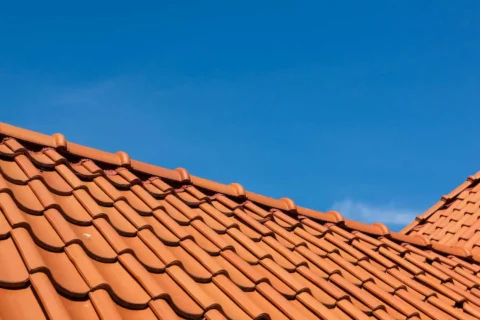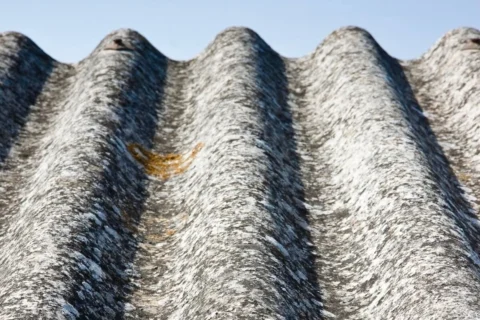How Long Does a Tile Roof Last
Tile roofs have graced the rooftops of homes and structures for centuries, their enduring presence a testament to their exceptional longevity and resilience. Unlike their asphalt shingle counterparts, which typically last around 20-30 years, tile roofs can boast an impressive lifespan of 50 to 100 years or more. This remarkable longevity is attributed to a combination of factors, making tile roofs a wise investment for homeowners seeking a durable and long-lasting roofing solution. But the question, “How long does a tile roof last?” has always bothered consumers for the longest time. This article will discuss all about it and more.
Understanding Tile Roof Longevity
Tile roofs come in a variety of materials, each with its unique characteristics and lifespan. Clay and concrete tiles reign supreme in terms of durability, often exceeding the 100-year mark. Their non-porous nature and resistance to moisture, rot, and insect infestation make them ideal for enduring the harshest of weather conditions. Slate tiles, known for their elegance and durability, can also achieve impressive lifespans, often reaching 75 years or more. Metal tiles, while less common, offer exceptional longevity, boasting lifespans of up to 50 years and beyond.
The extended lifespan of tile roofs is further enhanced by their ability to withstand extreme weather events. Unlike asphalt shingles, which can be easily damaged by hailstorms or high winds, tile roofs remain steadfast, their interlocking design and heavyweight providing exceptional resistance to wind uplift. This resilience to the elements translates into lower maintenance costs and peace of mind for homeowners, knowing that their roofs can weather the storm.
How Long Does a Tile Roof Last?
While the average lifespan of tile roofs is generally estimated between 50 and 100 years, several factors can influence the actual lifespan of a particular roof. The type of tile material plays a significant role, with clay and concrete tiles typically outlasting their slate and metal counterparts.
Factors That Determine the Life Expectancy of a Tile Roof
The life expectancy of a tile roof is determined by a combination of factors, including the type of tile material used, the quality of the installation, and the climate conditions of the area. Proper maintenance and repair can also extend the lifespan of a tile roof.
- Type of tile material: The type of tile material used is a major factor in determining the life expectancy of a tile roof. Clay and concrete tiles are generally the most durable, followed by slate and metal tiles. Asphalt shingles are the least durable type of tile roof, with an average lifespan of 20-30 years.
- Quality of the installation: The quality of the installation is also a major factor in determining the life expectancy of a tile roof. A poorly installed tile roof may only last for 10-20 years, while a properly installed tile roof may last for 50-100 years or more.
Types of Tile Roofs
There are four main types of tile roofs: clay, concrete, slate, and asphalt.
Asphalt Shingles
Asphalt shingles are the most common type of roofing material in the United States. They are relatively inexpensive and easy to install. However, asphalt shingles are not as durable as tile roofs and have a shorter lifespan of 20-30 years.
Slate Tiles
Slate tiles are a natural stone that has been used for roofing for centuries. They are known for their durability, beauty, and longevity. Slate tiles can last for 100 years or more and are very resistant to fire, rot, and insect damage.
Slate tiles are also relatively heavy, which can make them more difficult to install than other types of tile roofs. However, slate roofing is known for its durability and longevity, making it a worthwhile investment for homeowners who are looking for a long-lasting and beautiful roof.
Concrete Tiles
Concrete tiles are a man-made product that is made from a mixture of sand, cement, and water. They are a popular choice for roofs because they are durable, affordable, and can be found in a variety of colors and styles. Concrete tiles can last for 50-75 years or more.
Concrete tiles are also relatively heavy, which can make them more difficult to install than other types of tile roofs. However, their durability and affordability make them a good choice for homeowners who are looking for a long-lasting and affordable roof.
Clay Tiles
Clay tiles are a traditional roofing material that has been used for centuries. They are made from a mixture of clay and water that is then fired in a kiln. Clay tiles are known for their durability, beauty, and longevity. Clay tiles can last for 50-100 years or more and are very resistant to fire, rot, and insect damage.
Clay tiles are also relatively expensive, which can make them a less affordable option than other types of tile roofs. However, their durability and longevity make them a worthwhile investment for homeowners who are looking for a long-lasting and beautiful roof.
What Affects the Life Expectancy of a Tile Roof?
Several factors can affect the life expectancy of a tile roof; the following are some examples. By understanding these factors, homeowners can take steps to extend the lifespan of their tile roofs:
Installation Quality
Installation quality also plays a crucial role in determining the lifespan of a tile roof. Improper installation can lead to a host of problems, including leaks, loose tiles, and structural damage, all of which can significantly shorten the roof’s lifespan. Experienced and qualified roofing contractors are essential for ensuring proper installation and maximizing the longevity of tile roofs.
Climate Conditions
Climate conditions can also impact the lifespan of tile roofs. Extreme weather events, such as heavy snowfall, hailstorms, or strong winds, can put more stress on the roof, potentially affecting its lifespan. In areas prone to such extreme weather, it is particularly important to choose durable tile materials and ensure proper installation to minimize the impact of these events.
Maintenance Practices
Maintenance practices are another key factor influencing the lifespan of tile roofs. Regular inspections, cleaning, and repairs can prevent minor issues from escalating into major problems. Inspecting the roof annually for cracks, loose tiles, or damaged flashing can help identify and address issues early on, preventing them from causing further damage and extending the roof’s lifespan. Cleaning the roof to remove debris, moss, or algae can also extend its lifespan by preventing water accumulation and potential damage. Promptly repairing any cracked, broken, or missing tiles is essential to maintain the integrity of the roof system and prevent water leaks that could compromise its structural integrity.
Extending the Life of Your Tile Roof
Homeowners can take several proactive steps to extend the lifespan of their tile roofs and ensure they provide years of protection and beauty.
- Schedule regular inspections: Regular inspections by a qualified roofing professional can help identify and address any potential issues early on, preventing them from causing further damage and extending the roof’s lifespan. Aim for an inspection at least once a year or more frequently if you live in an area prone to severe weather.
- Clean the roof annually: Cleaning the roof to remove debris, moss, or algae can prevent water accumulation and potential damage. Use a soft-bristled brush and a mild detergent solution to gently clean the tiles. Avoid using harsh chemicals or pressure washers, as these can damage the tiles.
- Trim overhanging branches: Overhanging branches can fall onto the roof and cause damage to tiles. Regularly trim branches to keep them at least 10 feet away from the house.
- Address leaks promptly: Leaks can cause significant damage to the roof system, so it is important to address them promptly. If you notice any leaks, contact a qualified roofing contractor immediately to have them repaired.
- Seek professional repair for damaged tiles: Cracked, broken, or missing tiles can compromise the integrity of the roof and lead to leaks. If you notice any damaged tiles, have them repaired or replaced by a qualified roofing contractor. Let’s explore “How long does it take to repair a roof?” and gain valuable insights into the repair process.
By following these simple maintenance practices, homeowners can extend the lifespan of their tile roofs and enjoy their beauty and protection for many years to come.
Conclusion
Tile roofs have long been recognized for their exceptional durability, longevity, and aesthetic appeal. Their ability to withstand the elements, coupled with proper installation and maintenance, makes them a wise investment for homeowners seeking a long-lasting and protective roofing solution. With an average lifespan of 50 to 100 years or more, tile roofs offer a lifetime of beauty and protection, making them a truly remarkable choice for homes and structures worldwide.
Want a Roof That Lasts a Lifetime?
At DVR Roofing, we specialize in installing tile roofs that are built to last. Our experienced team uses only the highest quality materials and workmanship to ensure that your roof will withstand the elements for years to come. We offer a variety of tile options to choose from so you can find the perfect style to match your home; we also provide roof repairs and siding services. Contact us today for a free quote, and let us show you why DVR Roofing is the best choice for your tile roofing needs.
FAQs: How Long Does a Tile Roof Last
What is the most durable type of tile roof?
Clay and concrete tiles are generally the most durable types of tile roofs. They can last for 50-100 years or more. Slate tiles are also very durable, but they are more expensive than clay and concrete tiles.
How can I extend the lifespan of my tile roof?
There are several things you can do to extend the lifespan of your tile roof, including:
- Regularly inspect your roof for any signs of damage.
- Clean your roof annually to remove debris.
- Trim overhanging branches so they don’t damage your roof.
- Address leaks promptly.
- Have your roof repaired by a qualified roofing contractor if it is damaged.
What are the benefits of a tile roof?
Tile roofs offer a number of benefits, including:
- Durability: Tile roofs can last for 50-100 years or more.
- Beauty: Tile roofs are available in a variety of colors and styles.
- Low maintenance: Tile roofs require very little maintenance.
- Energy efficiency: Tile roofs can help to keep your home cooler in the summer and warmer in the winter.
- Fire resistance: Tile roofs are very resistant to fire.
Are tile roofs expensive?
Tile roofs are more expensive than asphalt shingle roofs. However, their durability, beauty, and low maintenance costs make them a worthwhile investment for many homeowners.


